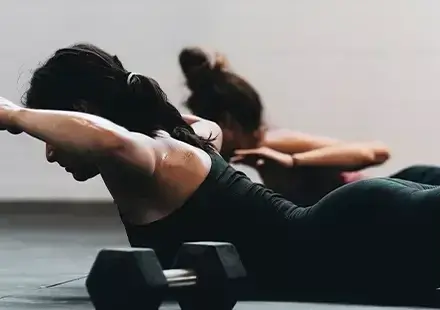What's the difference between Pilates and standard exercise for rehabilitation?
Pilates and more standard exercise regimes can both be beneficial for rehabilitation, but there are some key differences to understand when considering each approach
What kind of injuries can Pilates help recover?
Pilates can help with recovery from the following injuries:
- Musculoskeletal - Injuries to the lower back, knees, hips, shoulders or any muscles can be targeted directly using pilates. Exercises can be aimed at recovery from sports injuries too.
- Post surgery recovery - If your injury was bad enough to require surgery, pilates is excellent at restrengthening the affected areas in a controlled manner which shouldn’t put you in any discomfort. It doesn’t usually matter what type of surgery you underwent either, if you’re looking to get active again, pilates can help.
- Other conditions - Pilates is also beneficial for a number of other conditions and issues. It can help with chronic pain caused by underlying issues, or as a result of injury.
The great thing about pilates is that it’s a gentle process, and it allows you to return to regular and healthy movement patterns at your own pace, reducing/eliminating the risk of re-injury.
How does Pilates help with injury rehabilitation?

Pilates is so effective for injury rehabilitation because it is a holistic exercise which offers the benefits of a strengthened body and nurtured mind.
Pilates is a controlled means of getting back into exercise following an injury, which is how it helps with rehab.
Why is Pilates effective for injury rehabilitation?
The reason pilates is effective for injury rehabilitation is because of its focus on low-impact movements which can be targeted towards specific muscle groups to improve core strength and flexibility, as well as helping you to be more in touch with your own body following serious injury or surgery.
Another key reason that pilates is effective for rehabilitation is the focus it places on body awareness and the mind. Pilates sessions require a connection between your mind and your body. This includes focusing on your breathing and considering each and every movement you make. This is especially beneficial following injury because you may have become accustomed to not using certain parts of your body for movement, and pilates retrains the correct patterns.
Key Pilates exercises for injury rehabilitation
The first pilates exercise which is important for injury rehabilitation is known as the bridge exercise. This involves lying on the back with your feet hip-width apart and pressing through the heels to lift the hips towards the ceiling, creating a squeezing motion on your glute muscles.
Another important exercise is a single leg stretch, also known as a one leg stretch. This exercise has a few different forms, the most basic of which includes lying on your back with your knees bent 90 degrees, then extending one leg until the knee is fully extended, and the hip rotated at an angle of 45 degrees. This motion is then repeated with the opposite leg.
These are just a couple of the many exercises that are useful for injury rehabilitation, but of course the correct exercise plan completely depends on the individual scenario. For more information, check out our pilates service page. Or to book an appointment with our wonderful team, follow the link below.
Can Pilates prevent further injuries?
Pilates helps to prevent further injuries, thanks to its ability to increase core strength, flexibility and body awareness. The exercises involved in pilates should help you to correct the wrong movement patterns which could lead to reinjury, or injuries in other areas.
Whilst pilates is helpful to prevent other injuries, it’s important to remember that you can never guarantee this! That’s why we’d always recommend listening to your body, considering the level of strain you are putting on yourself and managing this to reduce the risk.
Choosing the right Pilates instructor
The right pilates instructor is one who is an expert in the field, has a plethora of qualifications and is a great listener/communicator. Thankfully, at Injury Mechanics, we’re lucky to have Sue Bardsley, one of the most highly qualified and knowledgeable instructors in the North West.
For high quality treatment from professionals who care, consider choosing Injury Mechanics for your rehabilitation journey.




